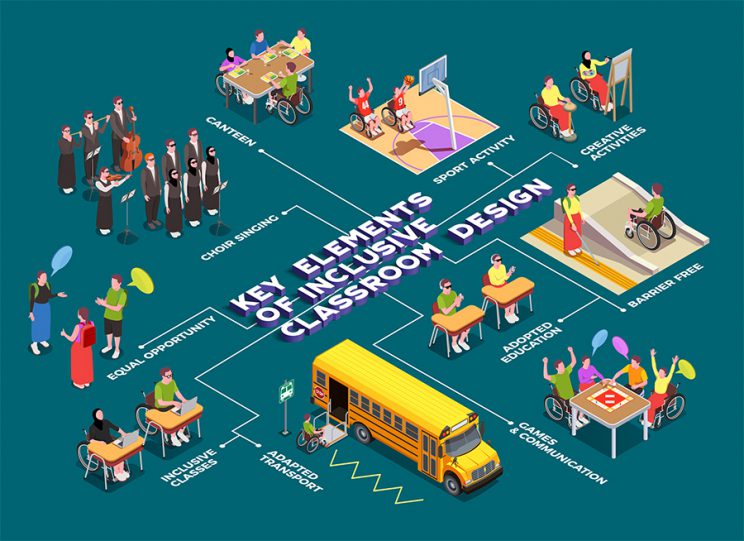Key Elements of Inclusive Classroom Design
Research article  Open access |
Available online on: 25 August, 2019 |
Last update: 28 October, 2021
Open access |
Available online on: 25 August, 2019 |
Last update: 28 October, 2021

Our understanding of how people learn and how we can teach to better support learning and acquisition of skills has developed significantly in recent times. Our appreciation of the value of creative thinking and self-directed activity in creating innovative and motivated students and employees for the future has also grown and steered education services and development.
Inclusive design for our schools today encompasses physical design of education settings, curriculum design and delivery, use of technology and trained motivated staff. Moreover, it must recognize and embrace diversity and uniqueness and enable every person to engage and develop their skills to achieve their optimum role in society.

Physical spaces need to be accessible to all with flexible furniture to facilitate a variety of learning sessions, from individual to group or practical sessions. Spaces should be clear and uncluttered with good lighting and minimal sudden loud noises.
A good understanding of Universal Design for Learning is required. This is an approach to the curriculum that is accessible to all and engages the learner, this means it supports students to express themselves and learn in their own individual way and works with students of all strengths and needs. It is particularly important for students with disability to enable them to access the same content as other students whether they have any physical limitations, visual or hearing impairments, communication or learning difficulties. Learning resources must be presented in various accessible formats.
New technologies allow teachers to communicate seamlessly with individuals or groups of students. Information on goals of learning sessions, assignments, extra resources and grades can be accessed by the click of a button and stored for easy access by all. Assignments can be completed in a variety of ways, not just the traditional essay or worksheet, for instance, students may be able to create a presentation, a podcast or a video to show what they know. They may even be allowed to draw a comic strip or incorporate a virtual model.
Likewise lesson plans can incorporate written, audio or visual information and use interactive virtual reality to bring learning alive for all students. This provides equal access and is highly motivating.
Staff need to be adequately trained in new technologies and their use. The pace of development can at times be difficult to keep up with and daunting for some educators. Students however seem able and willing to jump in.
Educators need to work with specialist in the fields of Technology and Assistive Technology to best understand how to implement these in the classroom. They should also work with people and organizations who possess the perspective and knowledge required to ensure this design is truly accessible to all, i.e. experts in the field of disability, and people with disabilities, their parents and teachers.
Children with specific needs should have clear plans in place with required resources clearly documented for all staff to be aware of and understand.
We have a great opportunity now to design and utilize inclusive connected classrooms that engage and motivate educators and students alike through the use of new technologies to support development of creative and innovative students and adults.
We must allow that this requires a complex system that needs to have an easy to use intuitive interface for users and must adapt as needs demand.
